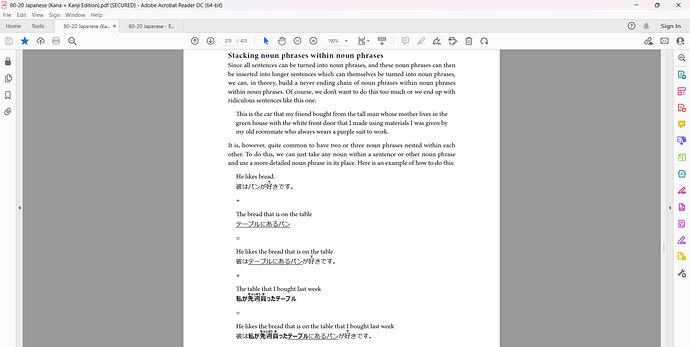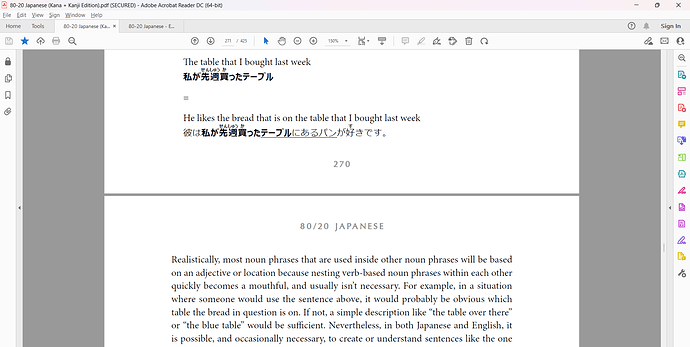So I’ve been using “80/20 Japanese” for learning Japanese grammar. I’ve gotten to noun phrases (Ch.10) and I’ve hit a roadblock. In Ch.10.5, it mostly focuses on adding extra information to your noun phrases but also introduces joint/nested noun phrases. Basically two or noun phrases in the same sentence.
Everything’s good until I get to the exercises and I’m asked to translate this sentence into Japanese: "I ate a delicious lunch at a new restaurant in Namba with some friends that I met (got to know) at university. "
I gave it a go before giving up and looking at the answer sheet. It was meant to be translated to this: 「大学で知り合った友達と難波にある 新しいレストランでおいしい昼ご飯を食べました。」
Is there a specific order I’m meant to put joint noun phrases in? I feel like I wasn’t given enough resources beforehand to translate this sentence. Idk, maybe I’m not getting it because it’s so late and I’m tired.
I’ve attached pictures of what info it gave me pre-exercise. If anyone has any related resources that could help me out, I’d really appreciate it!



 . A lot of times, I understand how an individual clause or grammar function works…but then get lost on where they fall in line with each other within a sentence.
. A lot of times, I understand how an individual clause or grammar function works…but then get lost on where they fall in line with each other within a sentence.